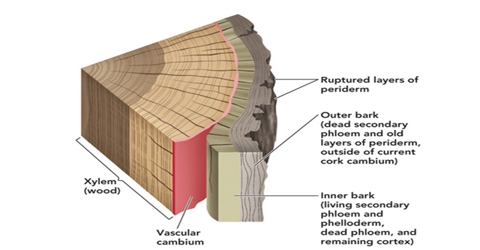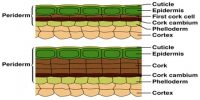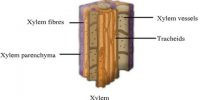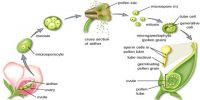The bark is the outer covering of a tree’s trunk and branches. Its purposes are conserving water and protecting the tree’s essential living systems from temperature extremes and storms as well as from attacks by diseases, animals, and insects. Bark also transports food and water throughout the tree. Severe bark damage will kill the tree.
Formation of bark:
The bark is the outermost covering of stems and roots of old plants. The bark is the protective covering of tree branches, trunks, and roots. The bark is formed as a result of the secondary growth in the plants.
(i) Due to the presence of suberin in the walls of cells water cannot enter into them
(ii) As the cork cells do not get any supply of water and food from the Inner conducting tissue, they gradually dry up and die and the dead cells are commonly known as bark. Thus, the dead cells form a hard layer around the stem. This hard coat which formed outside the cork cambium or phellogen known as bark.
The bark is of two types; such as-
- Scally bark- Guava, Pine plant, etc.
- Ringed bark- Mango, Litchi, etc.
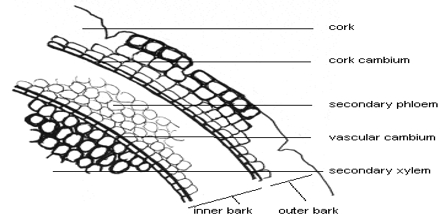
- Inner Bark Transports – The inner layer of bark, called the phloem, transports sugars made by photosynthesis in the leaves back down to feed the branches, trunk, and roots.
- Cambium Layer – The phloem on the inside of the bark is separated from the outer living layer of the heartwood, called the xylem, by a layer known as the cambium.
- Outer Bark Protection – The outer bark or epidermis protects the living phloem, cambium, and xylem from environmental damage. The outer bark is continually renewed from within; when the living cells of the phloem wear out, they become part of the dead outer bark.
- Unappetizing Layer – The outer bark of trees is indigestible and unpalatable, which discourages insects and animals from eating it.
The bark is a waterproof protective layer present on the trees to prevent the loss of water through evaporation. Since it majorly consists of dead cells, it forms a rigid covering that protects the interior of the plant from the entry of harmful micro-organisms, mechanical injury, high temperature, etc.
Functions: Trees use their bark for different purposes, but mainly for protection against water loss and predators. Insects and herbivores want to eat the leaves off woody plants. These plants are often protected by thick bark past where local herbivores can reach. The outer bark, which the compressed cork layers, is also waterproof. This helps keep the inner bark from drying out and ensures the plant can continue to move sugars from the leaves to where they are needed.
(i) It protects the plant from excessive heat and cold,
(ii) It reduces the rate of evaporation
(iii) It protects the inner tissue from dryness
(iv) It protects the Inner tissue from external hurt and the attack of fungi and bacteria
(v) It also gives a little mechanical support.
(vi) The inner bark is composed of living tissues, which help translocate the sugars created in the leaves to other parts of the plant.
